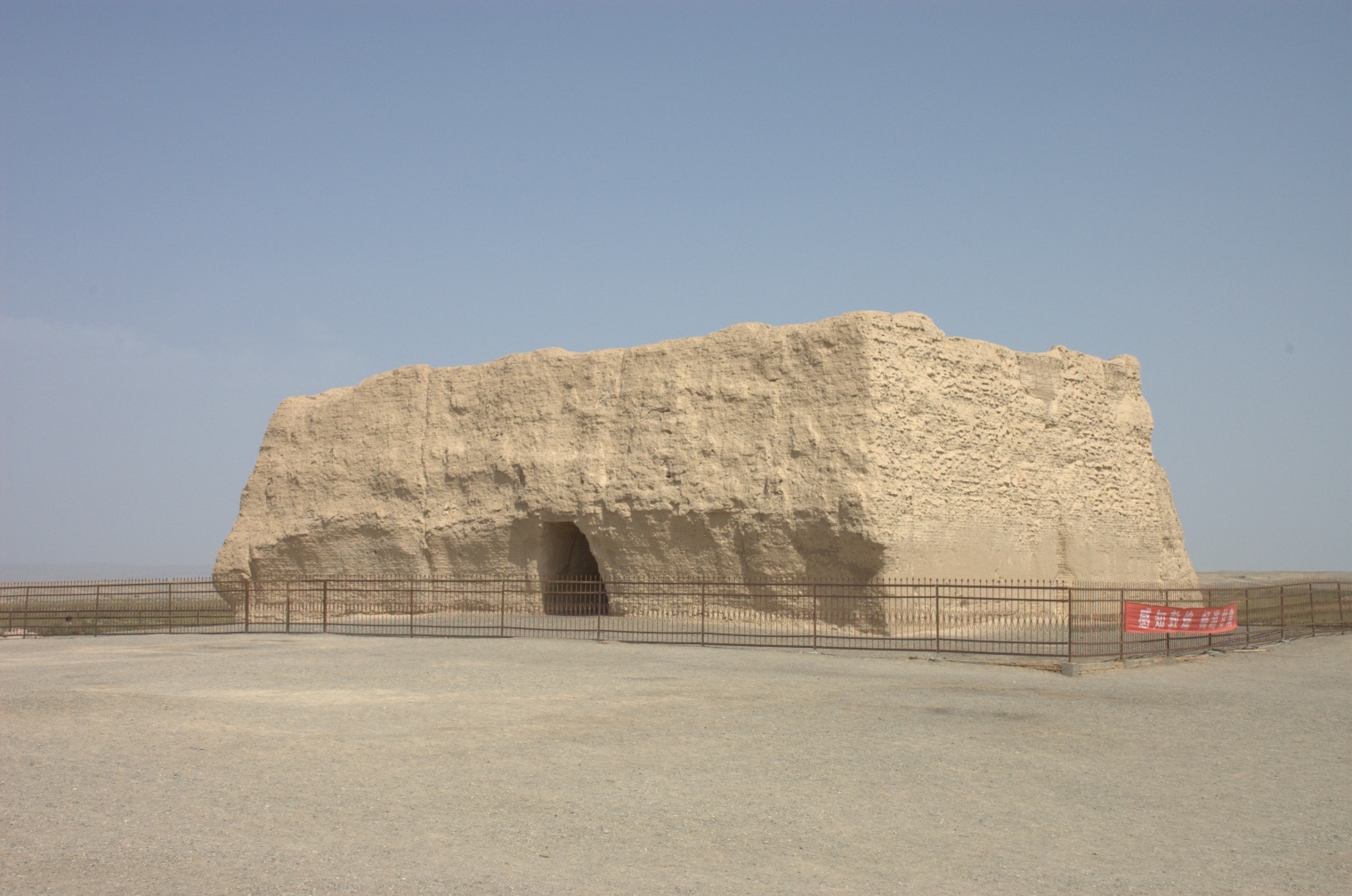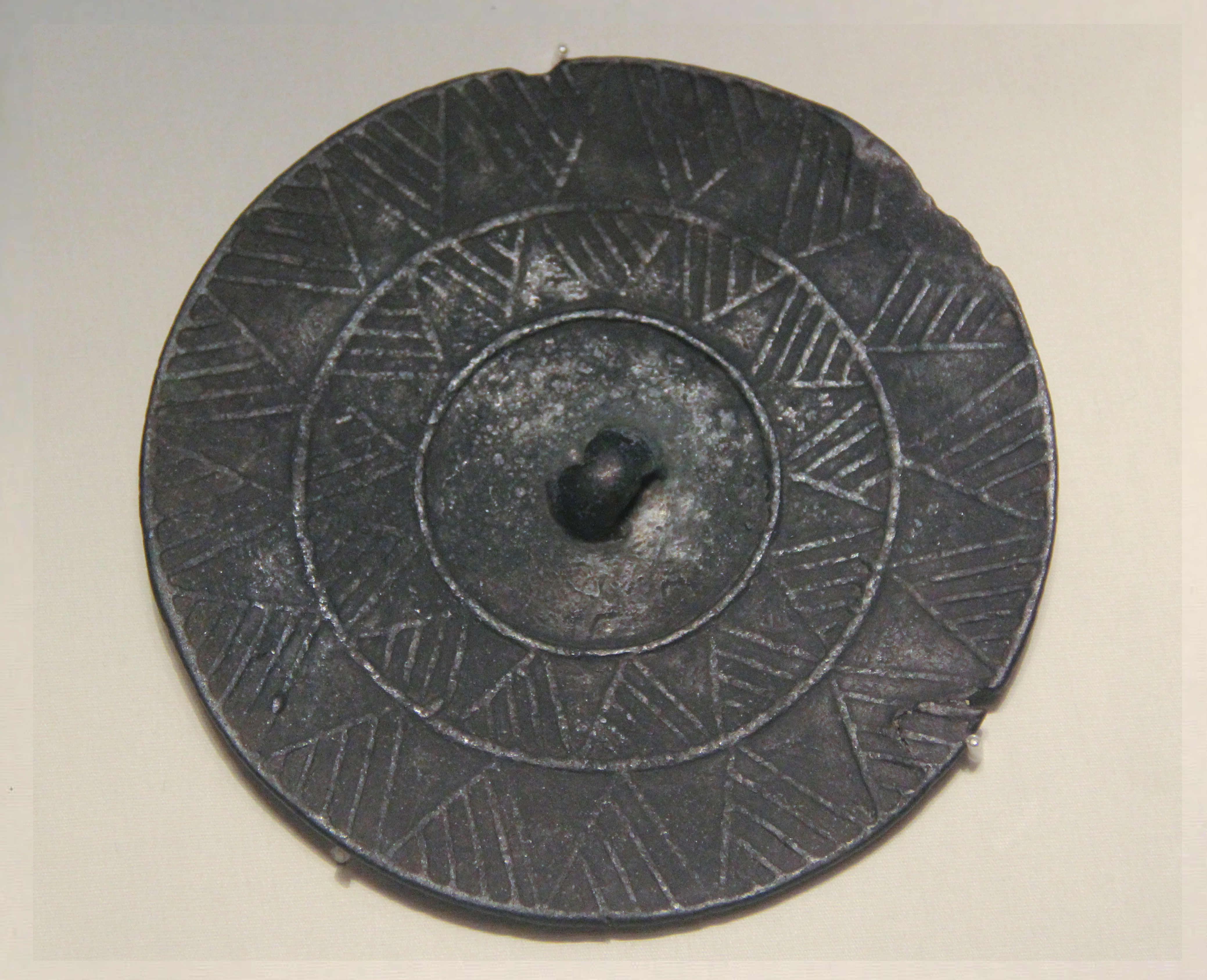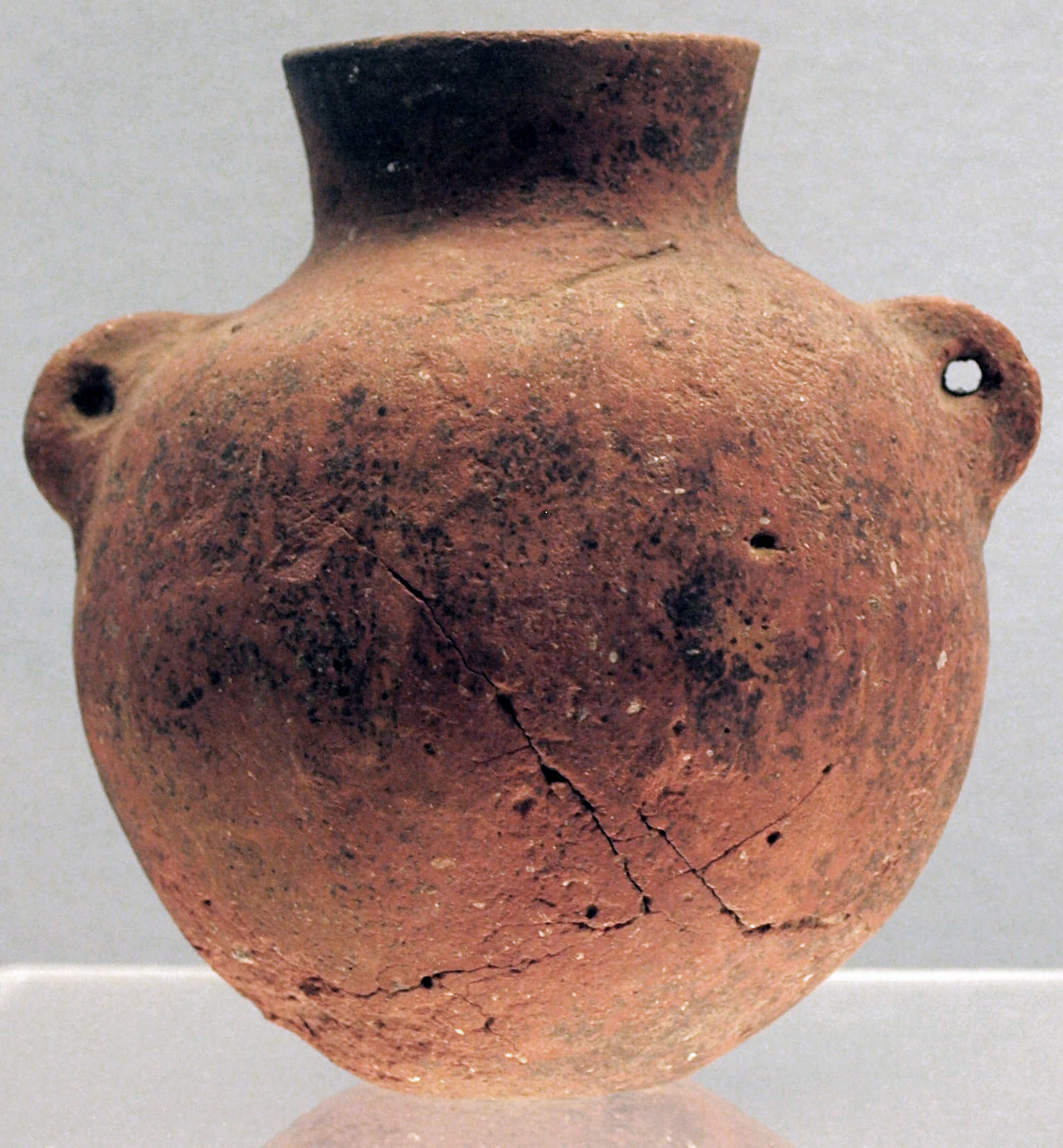|
Dadiwan
The Dadiwan culture (c. 7900–7200 BP) was a Neolithic culture located primarily in the eastern portion of Gansu and Shaanxi provinces in modern China. The culture takes its name from the deepest cultural layer found during the original excavation of the type site at Dadiwan. The remains of millet, pigs and dogs have been found in sites associated with the culture, which is itself defined by a thin-walled, cord-marked pottery, cord-marked ceramic tradition sometimes referred to as Laoguantai. The Dadiwan culture shares a variety of common features, in pottery, architecture, and economy, with the Cishan culture, Cishan and Peiligang cultures to the east. The Dadiwan type site in Qin'an County, Gansu sits atop a fan toe produced by a gully that drains into the Qingshui River valley, itself a tributary of the Wei River. The site was originally excavated from 1975 to 1984, and again in 2004, 2006, and 2009. The most recent excavations reveal that humans had occupied the location spo ... [...More Info...] [...Related Items...] OR: [Wikipedia] [Google] [Baidu] |
Dadiwan
The Dadiwan culture (c. 7900–7200 BP) was a Neolithic culture located primarily in the eastern portion of Gansu and Shaanxi provinces in modern China. The culture takes its name from the deepest cultural layer found during the original excavation of the type site at Dadiwan. The remains of millet, pigs and dogs have been found in sites associated with the culture, which is itself defined by a thin-walled, cord-marked pottery, cord-marked ceramic tradition sometimes referred to as Laoguantai. The Dadiwan culture shares a variety of common features, in pottery, architecture, and economy, with the Cishan culture, Cishan and Peiligang cultures to the east. The Dadiwan type site in Qin'an County, Gansu sits atop a fan toe produced by a gully that drains into the Qingshui River valley, itself a tributary of the Wei River. The site was originally excavated from 1975 to 1984, and again in 2004, 2006, and 2009. The most recent excavations reveal that humans had occupied the location spo ... [...More Info...] [...Related Items...] OR: [Wikipedia] [Google] [Baidu] |
List Of Neolithic Cultures Of China
This is a list of Neolithic cultures of China that have been unearthed by archaeologists. They are sorted in chronological order from earliest to latest and are followed by a schematic visualization of these cultures. It would seem that the definition of Neolithic in China is undergoing changes. The discovery in 2012 of pottery about 20,000 years BC indicates that this measure alone can no longer be used to define the period. It will fall to the more difficult task of determining when cereal domestication started. List Schematic outline These cultures are existed for the period from 8500 to 1500 BC. Neolithic cultures remain unmarked and Bronze Age cultures (from 2000 BC) are marked with *. There are many differences in opinion by dating these cultures, so the dates chosen here are tentative: For this schematic outline of its neolithic cultures China has been divided into the following nine parts: #Northeast China: Inner Mongolia, Heilongjiang, Jilin and Liaoning. #Northwes ... [...More Info...] [...Related Items...] OR: [Wikipedia] [Google] [Baidu] |
Gansu
Gansu (, ; alternately romanized as Kansu) is a province in Northwest China. Its capital and largest city is Lanzhou, in the southeast part of the province. The seventh-largest administrative district by area at , Gansu lies between the Tibetan and Loess plateaus and borders Mongolia ( Govi-Altai Province), Inner Mongolia and Ningxia to the north, Xinjiang and Qinghai to the west, Sichuan to the south and Shaanxi to the east. The Yellow River passes through the southern part of the province. Part of Gansu's territory is located in the Gobi Desert. The Qilian mountains are located in the south of the Province. Gansu has a population of 26 million, ranking 22nd in China. Its population is mostly Han, along with Hui, Dongxiang and Tibetan minorities. The most common language is Mandarin. Gansu is among the poorest administrative divisions in China, ranking 31st, last place, in GDP per capita as of 2019. The State of Qin originated in what is now southeastern Gansu and ... [...More Info...] [...Related Items...] OR: [Wikipedia] [Google] [Baidu] |
History Of Gansu
Gansu (, ; alternately romanized as Kansu) is a province in Northwest China. Its capital and largest city is Lanzhou, in the southeast part of the province. The seventh-largest administrative district by area at , Gansu lies between the Tibetan and Loess plateaus and borders Mongolia ( Govi-Altai Province), Inner Mongolia and Ningxia to the north, Xinjiang and Qinghai to the west, Sichuan to the south and Shaanxi to the east. The Yellow River passes through the southern part of the province. Part of Gansu's territory is located in the Gobi Desert. The Qilian mountains are located in the south of the Province. Gansu has a population of 26 million, ranking 22nd in China. Its population is mostly Han, along with Hui, Dongxiang and Tibetan minorities. The most common language is Mandarin. Gansu is among the poorest administrative divisions in China, ranking 31st, last place, in GDP per capita as of 2019. The State of Qin originated in what is now southeastern Gansu a ... [...More Info...] [...Related Items...] OR: [Wikipedia] [Google] [Baidu] |
Yangshao Culture
The Yangshao culture (仰韶文化, pinyin: Yǎngsháo wénhuà) was a Neolithic culture that existed extensively along the middle reaches of the Yellow River in China from around 5000 BC to 3000 BC. The culture is named after the Yangshao site, the first excavated site of this culture, which was discovered in 1921 in Yangshao town, Mianchi County, Sanmenxia, western Henan Province by the Swedish geologist Johan Gunnar Andersson (1874–1960). The culture flourished mainly in the provinces of Henan, Shaanxi and Shanxi. Recent research indicates a common origin of the Sino-Tibetan languages with the Cishan, Yangshao and/or the Majiayao cultures. Economy Subsistence The main food of the Yangshao people was millet, with some sites using foxtail millet and others proso millet, though some evidence of rice has been found. The exact nature of Yangshao agriculture, small-scale slash-and-burn cultivation versus intensive agriculture in permanent fields, is currently a matte ... [...More Info...] [...Related Items...] OR: [Wikipedia] [Google] [Baidu] |
China
China, officially the People's Republic of China (PRC), is a country in East Asia. It is the world's most populous country, with a population exceeding 1.4 billion, slightly ahead of India. China spans the equivalent of five time zones and borders fourteen countries by land, the most of any country in the world, tied with Russia. Covering an area of approximately , it is the world's third largest country by total land area. The country consists of 22 provinces, five autonomous regions, four municipalities, and two Special Administrative Regions (Hong Kong and Macau). The national capital is Beijing, and the most populous city and financial center is Shanghai. Modern Chinese trace their origins to a cradle of civilization in the fertile basin of the Yellow River in the North China Plain. The semi-legendary Xia dynasty in the 21st century BCE and the well-attested Shang and Zhou dynasties developed a bureaucratic political system to serve hereditary monarchies, or dyna ... [...More Info...] [...Related Items...] OR: [Wikipedia] [Google] [Baidu] |
Qijia Culture
The Qijia culture (2200 BC – 1600 BC) was an early Bronze Age culture distributed around the upper Yellow River region of Gansu (centered in Lanzhou) and eastern Qinghai, China. It is regarded as one of the earliest bronze cultures in China. The Qijia Culture is named after the Qijiaping Site (齐家坪) in Gansu Province. Prior to Qijia culture, in the same area there existed Majiayao culture that was also familiar with metalwork. At the end of the third millennium B.C., Qijia culture succeeded Majiayao culture at sites in three main geographic zones: Eastern Gansu, Middle Gansu, and Western Gansu/Eastern Qinghai. Research Johan Gunnar Andersson discovered the initial site at ''Qijiaping'' () in 1923. Qijia culture was a sedentary culture, based on agriculture, and breeding pigs, which were also used in sacrifices. Qijia culture is distinguished by a presence of numerous domesticated horses, and practice of oracle divination, the metal knives and axes recovered apparently p ... [...More Info...] [...Related Items...] OR: [Wikipedia] [Google] [Baidu] |
Neolithic Cultures Of China
The Neolithic period, or New Stone Age, is an Old World archaeological period and the final division of the Stone Age. It saw the Neolithic Revolution, a wide-ranging set of developments that appear to have arisen independently in several parts of the world. This "Neolithic package" included the introduction of farming, domestication of animals, and change from a hunter-gatherer lifestyle to one of settlement. It began about 12,000 years ago when farming appeared in the Epipalaeolithic Near East, and later in other parts of the world. The Neolithic lasted in the Near East until the transitional period of the Chalcolithic (Copper Age) from about 6,500 years ago (4500 BC), marked by the development of metallurgy, leading up to the Bronze Age and Iron Age. In other places the Neolithic followed the Mesolithic (Middle Stone Age) and then lasted until later. In Ancient Egypt, the Neolithic lasted until the Protodynastic period, 3150 BC.Karin Sowada and Peter Grave. Egypt in the ... [...More Info...] [...Related Items...] OR: [Wikipedia] [Google] [Baidu] |
Qin'an County
Qin'an County () is a county in the east of Gansu province of the People's Republic of China. It is under the administration of the prefecture-level city of Tianshui. Its postal code is 741600, and in 1999 its population was 567,553 people. As of 2018, the population is 618,000 people. It is one of the poorest counties of Gansu, being appointed as one of 23 counties part of a provincial poverty alleviation project. History The area has been inhabited since prehistoric times, as evidenced by 68 Neolithic cultural sites including the Dadiwan culture. It is reputedly the county where Zhuge Liang's troops, commanded by Ma Su, were defeated by Zhang He at the Battle of Jieting. Known historically as Chengji (), it vied with Tianshui (then known as Shanggui) as the seat of the medieval province of Qinzhou during the Tang Dynasty and Five Dynasties eras.Dudbridge, Glen. ''A Portrait of Five Dynasties China: From the Memoirs of Wang Renyu (880–956)''pp. 8 ff.Oxford University Press ... [...More Info...] [...Related Items...] OR: [Wikipedia] [Google] [Baidu] |
Neolithic
The Neolithic period, or New Stone Age, is an Old World archaeological period and the final division of the Stone Age. It saw the Neolithic Revolution, a wide-ranging set of developments that appear to have arisen independently in several parts of the world. This "Neolithic package" included the introduction of farming, domestication of animals, and change from a hunter-gatherer lifestyle to one of settlement. It began about 12,000 years ago when farming appeared in the Epipalaeolithic Near East, and later in other parts of the world. The Neolithic lasted in the Near East until the transitional period of the Chalcolithic (Copper Age) from about 6,500 years ago (4500 BC), marked by the development of metallurgy, leading up to the Bronze Age and Iron Age. In other places the Neolithic followed the Mesolithic (Middle Stone Age) and then lasted until later. In Ancient Egypt, the Neolithic lasted until the Protodynastic period, 3150 BC.Karin Sowada and Peter Grave. Egypt in th ... [...More Info...] [...Related Items...] OR: [Wikipedia] [Google] [Baidu] |
Cishan Culture
The Cishan culture (6500–5000 BC) was a Neolithic culture in northern China, on the eastern foothills of the Taihang Mountains. The Cishan culture was based on the farming of broomcorn millet, the cultivation of which on one site has been dated back 10,000 years. The people at Cishan also began to cultivate foxtail millet around 8700 years ago. However, these early dates have been questioned by some archaeologists due to sampling issues and lack of systematic surveying. Common artifacts from the Cishan culture include stone grinders, stone sickles and tripod pottery. The sickle blades feature fairly uniform serrations, which made the harvesting of grain easier. Cord markings, used as decorations on the pottery, was more common compared to neighboring cultures. Also, the Cishan potters created a broader variety of pottery forms such as basins, pot supports, serving stands, and drinking cups. Since the culture shared many similarities with its southern neighbor, the Peiligan ... [...More Info...] [...Related Items...] OR: [Wikipedia] [Google] [Baidu] |
Peiligang Culture
The Peiligang culture was a Neolithic culture in the Luo River (Henan), Yi-Luo river basin (in modern Henan, Henan Province, China) that existed from 7000 to 5000 BC. Over 100 sites have been identified with the Peiligang culture, nearly all of them in a fairly compact area of about 100 square kilometers in the area just south of the river and along its banks. Peiligang culture The culture is named after the site discovered in 1977 at Peiligang, a village in Xinzheng, Xinzheng County. Archaeologists believe that the Peiligang culture was egalitarianism, egalitarian, with little political organization. The culture practiced agriculture in the form of cultivating millet and animal husbandry in the form of raising pigs and possibly poultry. The people hunted deer and wild boar, and fished for carp in the nearby river, using nets made from hemp fibers. The culture is also one of the oldest in ancient China to make pottery. This culture typically had separate residential and burial ... [...More Info...] [...Related Items...] OR: [Wikipedia] [Google] [Baidu] |





